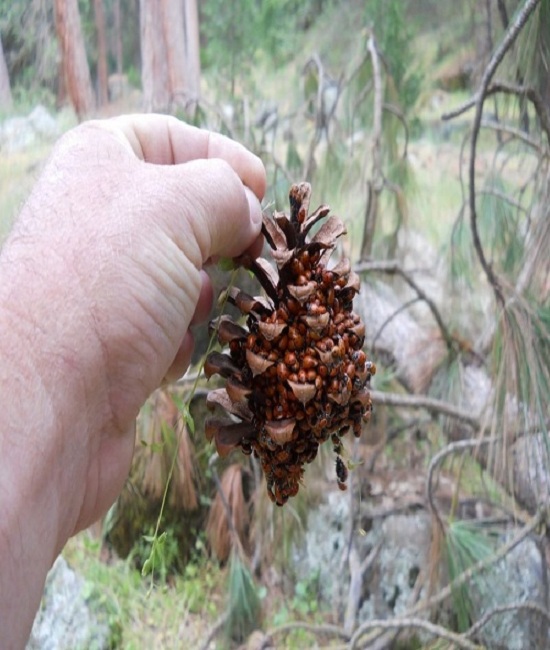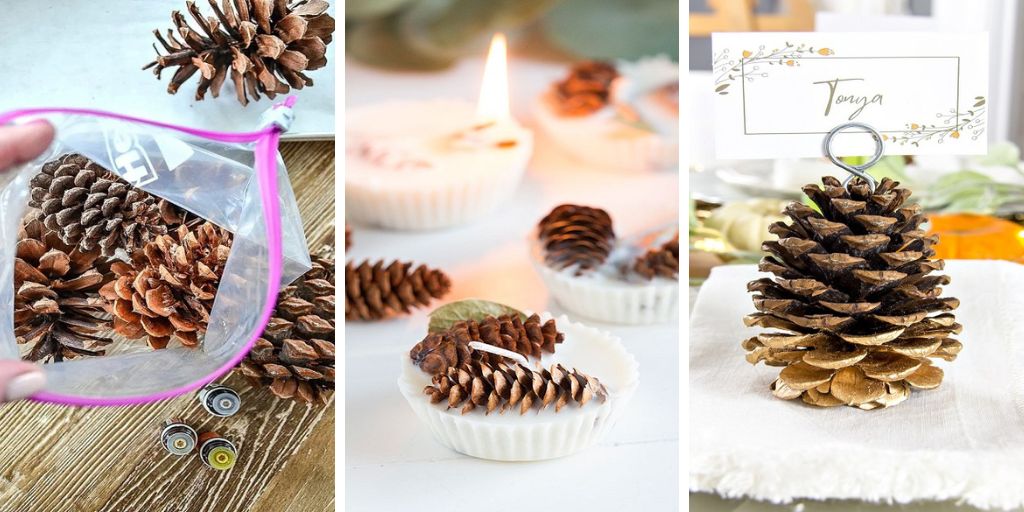Because of their natural elegance, pine cones may be the best way to bring the outdoors inside. Whatever the case may be, many of us may be seen scurrying around in the fall, collecting pine cones wherever we can.
These majestic trees not only enhance the aesthetic value of your property but also serve as effective windbreaks and natural privacy screens.
In this article, you will find several creative ways to use pine cones in your home and yard.
Keep pets and pests away from your houseplants
There will be frequent potting soil cleanup if you have a cat or dog and have houseplants within reach. For further protection, scatter a layer of pine cones around the bottoms of your plants to deter curious pets.
Likewise, an infestation of fungus gnats can be avoided by applying this barrier. In order to reproduce, gnats need to be able to quickly access moist soil. By erecting this organic barrier, you can reduce the number of fungus gnats in your garden. They’ll also add a lovely aesthetic touch when placed at your plants’ foundation.
If you decide to take this route, water the plants down below the pine cones but not the pine cones themselves. Having this in place will further reduce the likelihood of a fungus gnat invasion.
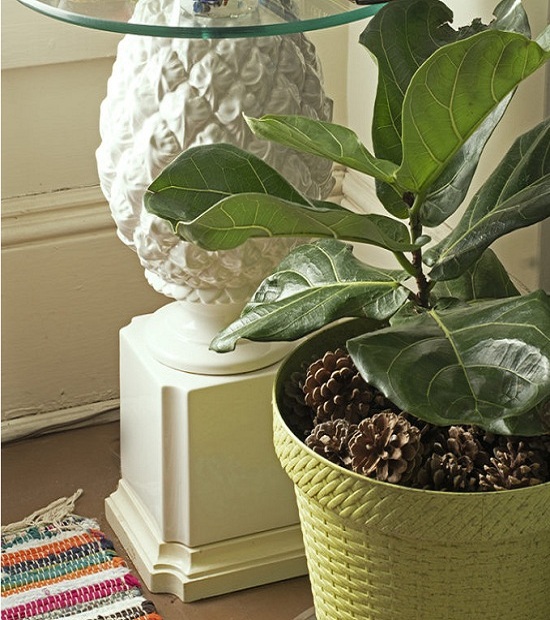
Scented Pine Cones
A plastic bag, some essential oils, and a spray bottle are all you need to produce your own fragrant pine cones at home.
If you scent them yourself, you can create a unique aroma for your house by combining different essential oils.
A gallon-sized plastic bag with a zip-top closure is ideal for storing pine cones.
Then, put in some drops of an aromatic oil that you like.
Make sure the bag is well sealed and shake it. Wait a week before opening the bag containing the cones.

Rustic Pine Cone Place Card Holder
Using pine cones as place card holders is a simple and easy way to inject some whimsical flair into any meal. Insert the name cards into the front cover spines. Throw in some extra cones in the corner and on the ends of the table, too.
For a more natural, autumnal, or wintry feel, these look lovely on their own. Of course, if you’re looking for something with a little more pizzazz, you can always dress them up. On the other hand, nothing makes a house feel more like a home than the addition of natural elements.

Natural Fire Starters
Make these stunning fire starters out of pine cones if you find yourself with an overabundance of the natural material. You only need paraffin wax to make them.
However, to make them stand out even more, color the wax with bits of broken crayon. And for a fragrant fire, try sprinkling dried herbs on the wet wax. These fire starters benefit greatly from the addition of thyme, rosemary, nutmeg, and sage.
These are great for giving as homemade presents
Anyone who has a fireplace would appreciate a dozen pine cones used as fire starters on Christmas. Don’t forget your camping-loving friends and relatives either.
- Melt the paraffin wax in a double boiler at low heat. If you want to color the wax, do so by stirring in a few bits of crayon after the wax has melted.
- Turn off the heat and put a ten-minute timer on. It’s best if the wax can cool and thicken a bit before use. If you don’t, the wax will just coat your object superficially, and any more dippings will simply melt away.
- Again, stir the wax, and then roll the cone in it to coat all of its surfaces. Keep the pine cone tilted so the wax may run back into the pot.
- To prevent the cone from falling apart as it hardens, set it on a layer of wax or parchment paper. The fire starters can be scented with dried herbs if desired. While the wax is still wet, sprinkle the herbs on top.
- Pine cones with herbs can be dipped in wax multiple times to ensure the wax completely covers the herbs. Once the wax has cooled a little, repeat the melting process.
- A full day of cooling on the paper is required for the cones.
Here’s a tip: once the pan has cooled, put it in the freezer for half an hour to make removing the wax a breeze. Once the wax has frozen, it will easily break apart and pop out.
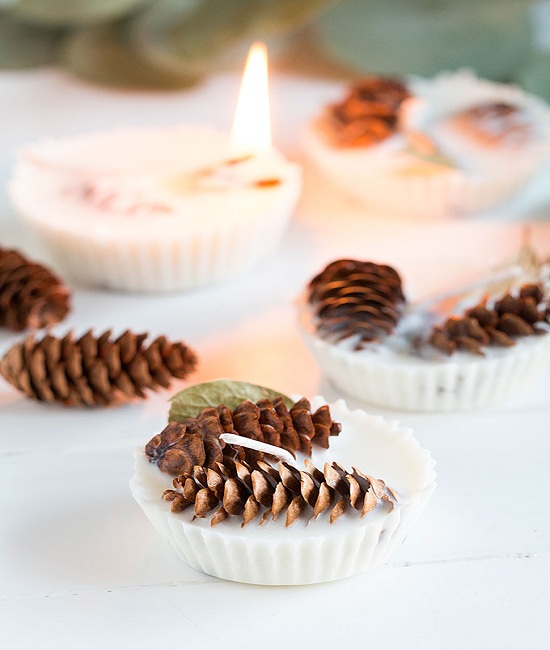
Peanut Butter Bird Feeder
Young children who don’t mind getting their hands sticky will enjoy doing this craft.
- Spread peanut butter generously over the pine cone using a butter knife or clean popsicle stick.
- Next, coat the cone and roll it in birdseed. Once the seed is covered, press it into the peanut butter.
- You may hang these all-natural bird feeders from your porch or from the branches of nearby trees with a simple length of string.
Now, relax with a cup of tea in hand and watch the avian visitors you’ll be getting. You might even see some of the more daring squirrels swinging crazily from the pine cones as they devour this delicacy.
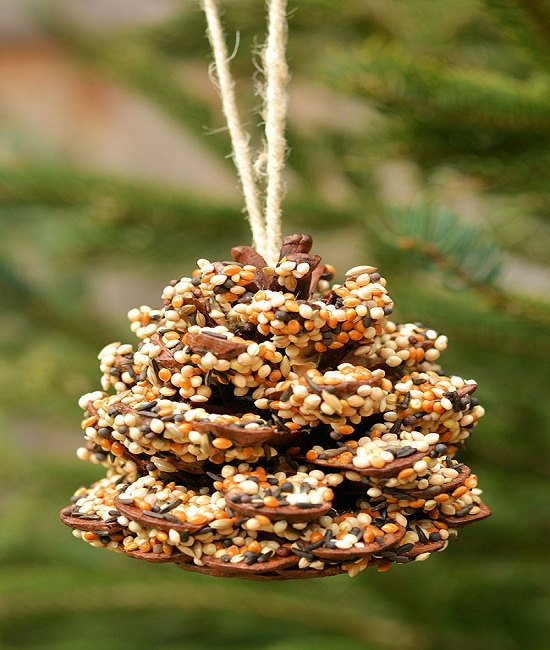
Mulch that Keeps Out Pests
Those lucky enough to have pine trees in their yards can finally find a use for all those pine cones they’ve been collecting.
Pine cones are great for using as a natural mulch around bushes and flower beds.
They degrade slowly and last for quite some time. The water will not be absorbed by the cones since they are coated with a natural resin that prevents absorption. Soil erosion is also reduced because to this design.
Use intact pine cones as mulch to discourage neighborhood cats and other four-legged creatures from digging in your flower beds or messing up your bushes.
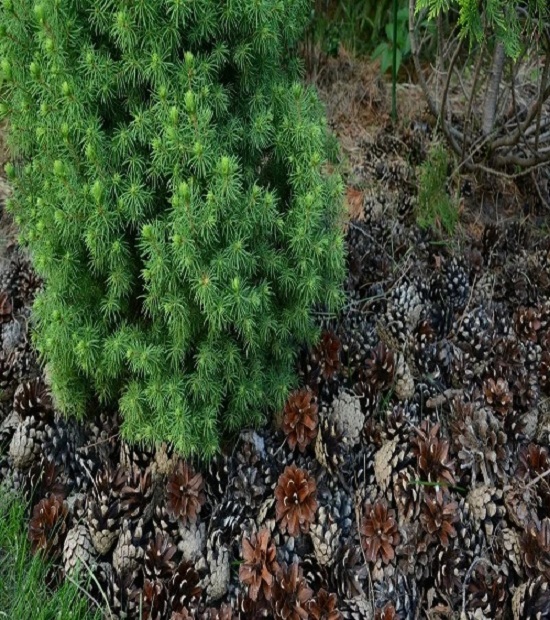
Make use of pine cones in your container gardening
Growers that have limited space can now celebrate! This idea is fantastic, and you’ll appreciate it.
Soil gets quite heavy, as anyone who has tried growing their own veggies and herbs in containers will attest to. Additionally, the cost of purchasing soil and filling the pots can add up quickly.
Before putting soil in the containers, line the bottom with pine cones. Put a quarter of a pine cone’s worth into the container. Reduce the amount of soil you put into the pots and save money. Plus, it’ll help things drain better.
Tomatoes, peppers, and eggplants are just a few examples of veggies that bear fruit above ground, making this technique perfect for them. These plants typically don’t have root systems that can reach that far into a 5-gallon container.
Pine cones last for a long time and can be used again and again. Once they begin to decompose, they can be added to the compost pile, which brings me to my next piece of advice.
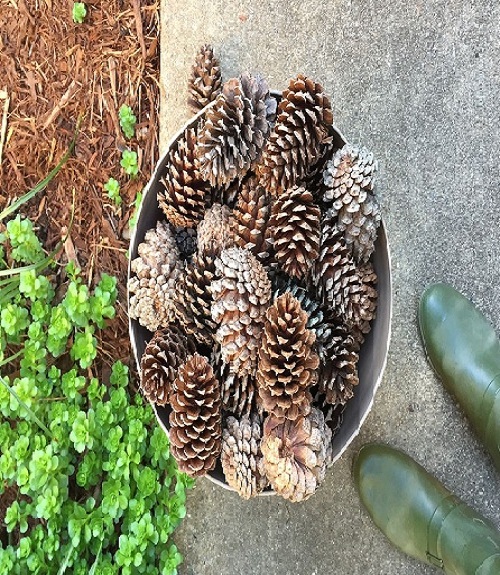
Put the pine cones in the pile of compost
As a “brown” material, pine cones are ideal for the compost bin. They degrade slowly, thus they should be separated first. The pine cones should be chipped before being added to the compost pile if a chipper is available.
If you have a lot of pine trees on your property and a surplus of pine cones, composting them is a great option.
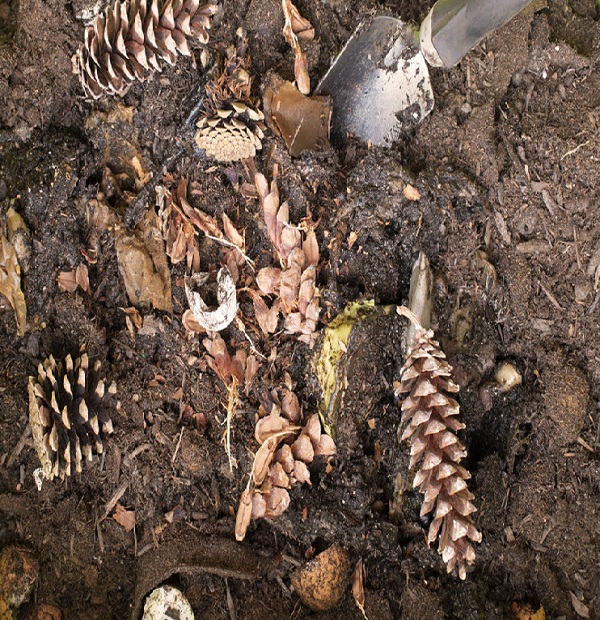
Ladybug Hotel
The presence of ladybugs in a garden is always a welcome sight. Give these aphid-eating beetles a safe haven in your garden, and they’ll come in droves to feast on your pests.
Put some pine cones in and around the plants to attract these helpful insects and keep them close by.
You may get the kids involved by having them paint the pine cones or decorate them to appear like small dwellings.
Evidently, pine cones have more uses than merely as seasonal ornaments. These hardy wooden gems have countless practical applications in the yard and house.
